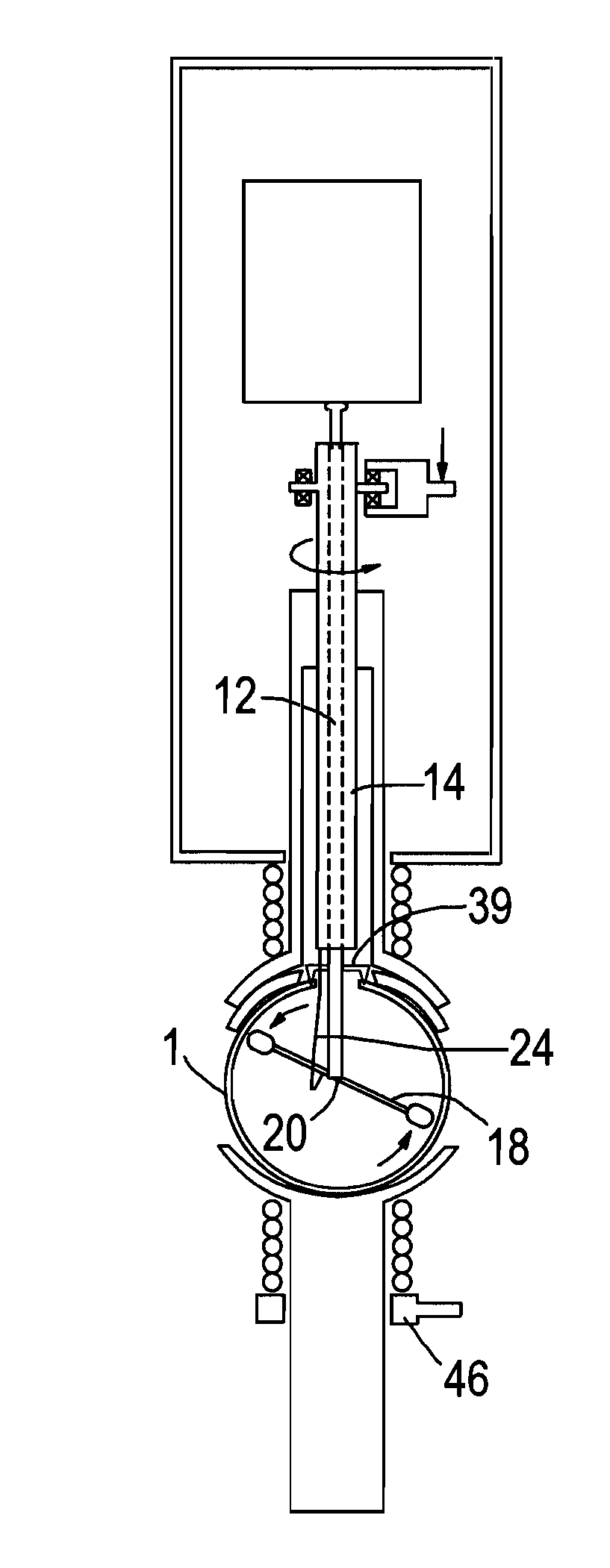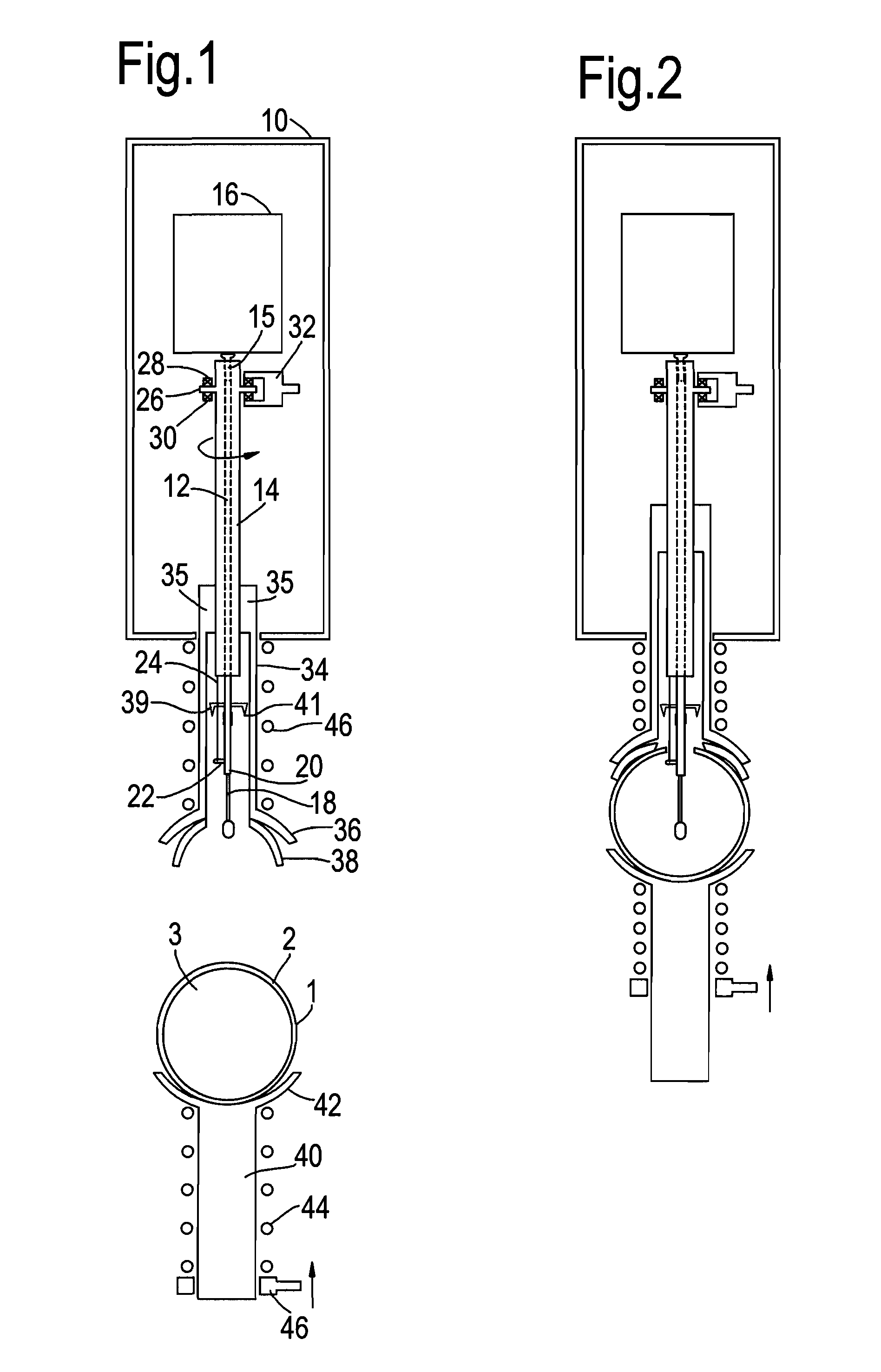Juice Extractor
a juice extractor and juice technology, applied in the field of juice extractors, can solve the problems of difficult peeling of oranges, difficult extraction of fruit close, and many people's inability to eat oranges
- Summary
- Abstract
- Description
- Claims
- Application Information
AI Technical Summary
Benefits of technology
Problems solved by technology
Method used
Image
Examples
first embodiment
[0084]As can be seen from FIG. 12, the top of the orange is in a known position irrespective of the size of the orange. Therefore, the axis 20 of the blade 18 will not necessarily be coincident with the centre of the orange, in contrast to the first embodiment in FIGS. 1 to 4. Thus, the sphere shape traced out by the blade 18 will be located towards the upper part of the orange if a large orange is used.
[0085]In order to extract the blade 18 from the orange, it is returned to the position where it lies co-linear with the shaft, the ring 72 is then pulled down against the action of the spring loaded arm, which causes the orange to be lowered until it is free of the blade 18, similar to the arrangement shown in FIG. 10. As the orange is removed, the shroud 34 drops under the influence of a spring (not shown) until it reaches the position shown in FIG. 10.
[0086]The blade and the bottom end of the shaft can be cleaned in situ by pushing a glass of water against the cup 36 of the shroud ...
second embodiment
[0089]Referring initially to FIGS. 14 and 15, there is shown a device 101 in accordance with a second embodiment for extracting the juice from an orange 102 that includes an outer skin 103 and the orange flesh 104; only the skin 103 of the upper section of the orange is shown in FIG. 14; it is shown hatched.
[0090]The device includes an upper section, or ‘lid’105, and a base section 106. A blade frame 108 is secured to a surface 174 on the underside of the lid 105; it is forked (see FIGS. 15a to c) and extends downwardly on either side of a blade 109. The blade 109 is connected to the blade frame 108 by a pivot 110 extending through both the blade 109 and the blade frame 108; the axis of the pivot lies orthogonal to the longitudinal axis 173 of the device.
[0091]The upper section 105 contains a push button 114, which is connected to one end of a vertical shaft 107, and when the button is depressed, the shaft is moved vertically downwards. A forked arm 111 is connected to the bottom of...
PUM
 Login to View More
Login to View More Abstract
Description
Claims
Application Information
 Login to View More
Login to View More - R&D
- Intellectual Property
- Life Sciences
- Materials
- Tech Scout
- Unparalleled Data Quality
- Higher Quality Content
- 60% Fewer Hallucinations
Browse by: Latest US Patents, China's latest patents, Technical Efficacy Thesaurus, Application Domain, Technology Topic, Popular Technical Reports.
© 2025 PatSnap. All rights reserved.Legal|Privacy policy|Modern Slavery Act Transparency Statement|Sitemap|About US| Contact US: help@patsnap.com



